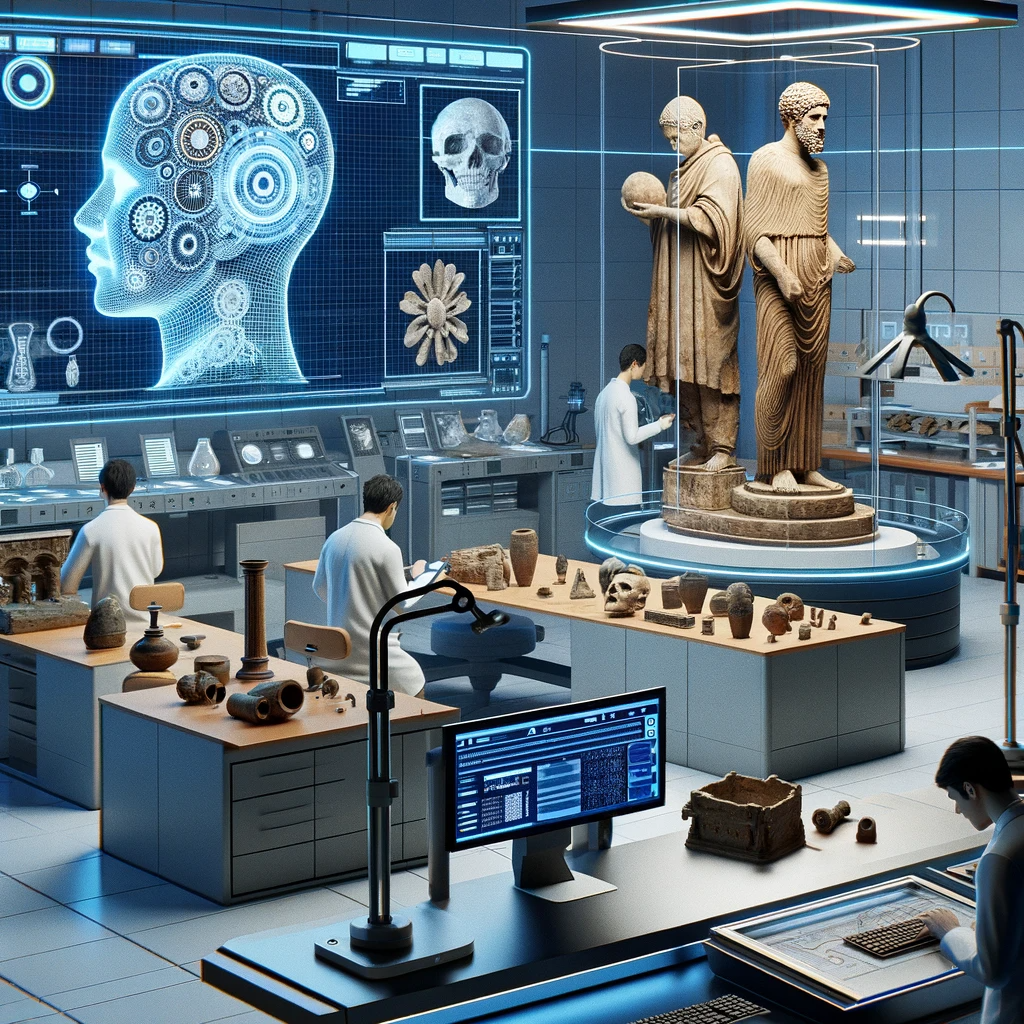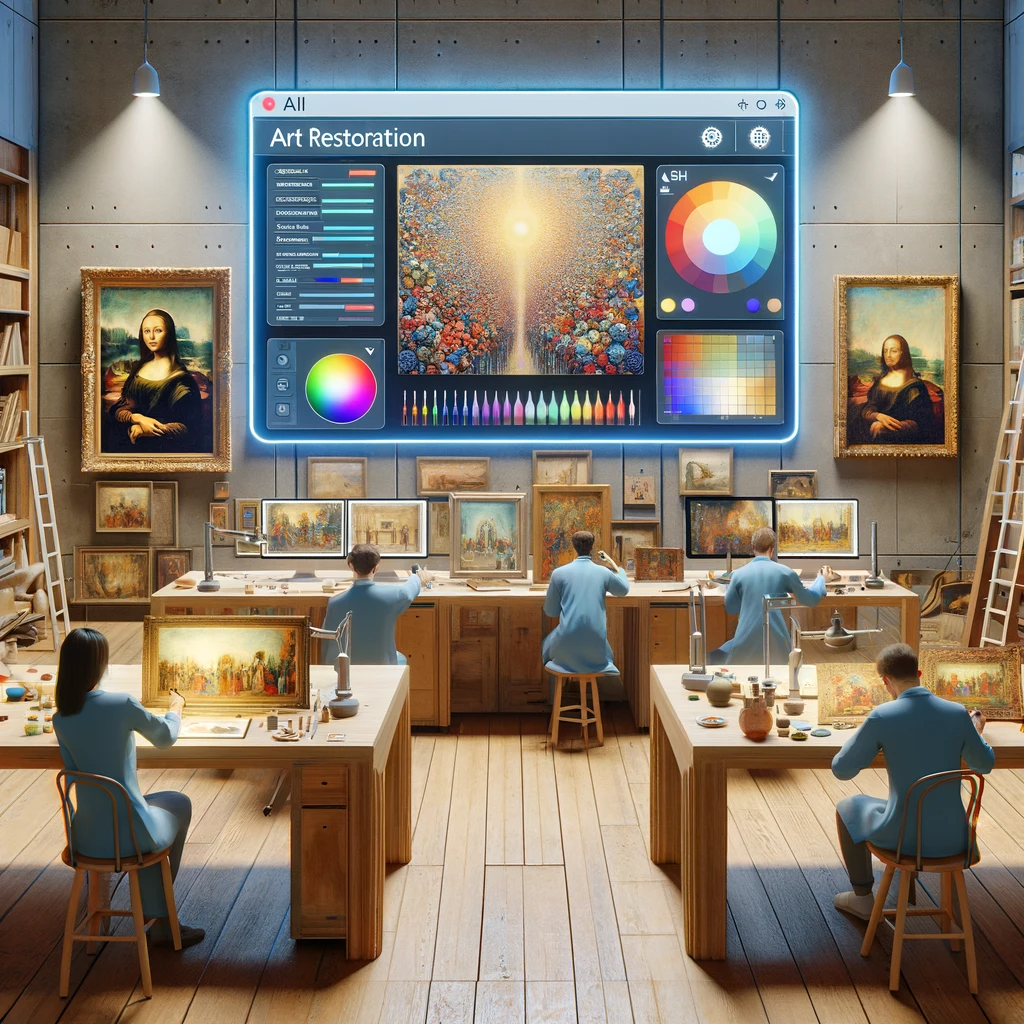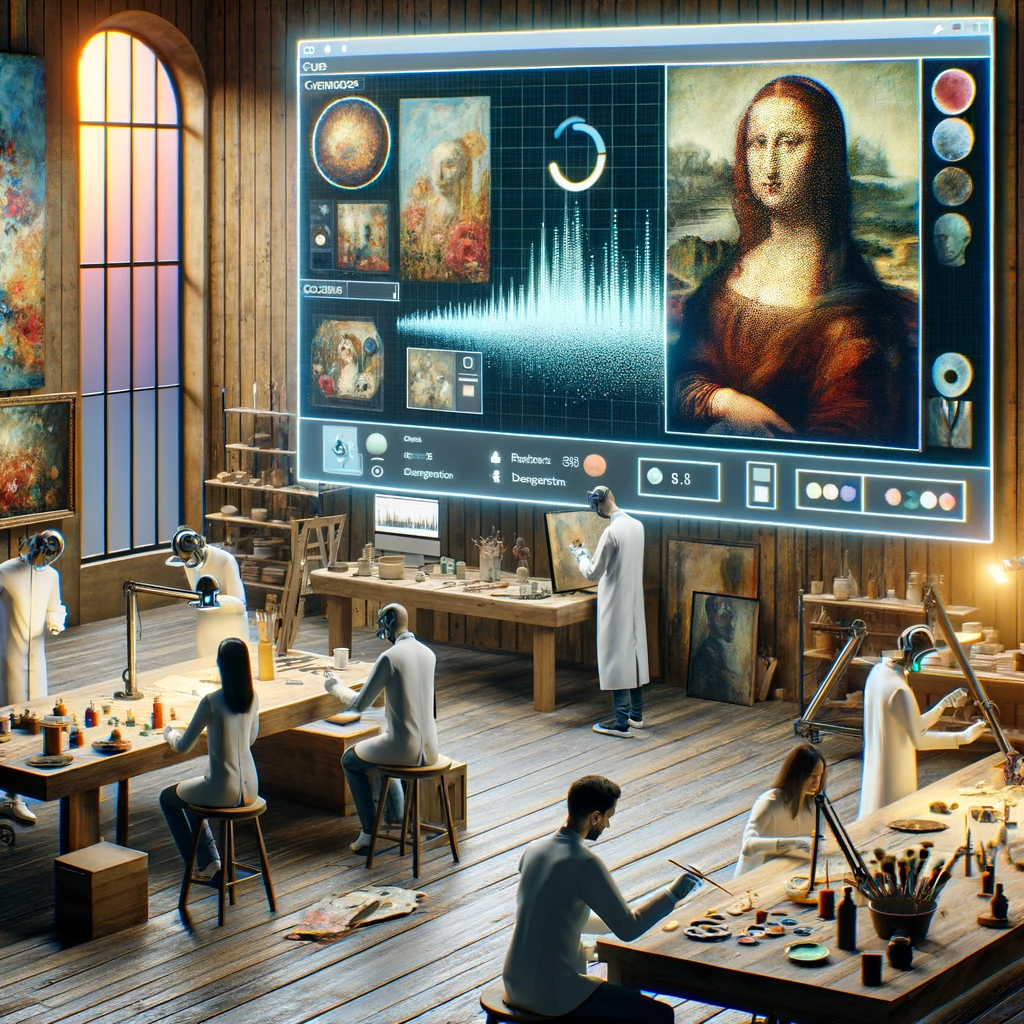In the realm of art and cultural heritage preservation, every brushstroke, chisel mark, and pigment layer on a historical artifact carries with it the story of our past. These artifacts provide a tangible link to history, culture, and artistic expression. However, the ravages of time and environmental factors can take a toll on these precious relics, leading to their deterioration. The task of restoring and preserving these historical artifacts is a complex and delicate one, and it’s a challenge that Artificial Intelligence (AI) has stepped up to tackle.
AI has begun to play a pivotal role in the world of art restoration and preservation. Its capabilities in analysis, reconstruction, and preservation have opened up new possibilities for conservators and historians. This article explores how AI is contributing to the restoration and preservation of historical artifacts, shedding light on the innovative techniques and tools that are reshaping the field.
Analyzing Artifacts with AI
Understanding the condition of an artifact is the first step in its restoration journey. Traditional methods of analysis involve meticulous examination by conservators and experts. While invaluable, these methods can be time-consuming and limited by the human eye’s capabilities. This is where AI-powered image analysis and computer vision technologies have made a significant impact.
AI algorithms can process vast amounts of visual data and detect subtle details that might escape the human eye. For instance, they can identify microcracks, surface irregularities, and signs of deterioration in paintings, sculptures, and historical documents. This level of precision allows conservators to create a comprehensive assessment of an artifact’s condition and prioritize the necessary restoration work.

Reconstructing Lost or Damaged Elements
One of the most remarkable applications of AI in art restoration is its ability to reconstruct missing or damaged elements of an artifact. Historical artworks often suffer from partial damage due to factors like fire, vandalism, or simply the passage of time. While conservators have long used their expertise to reconstruct these missing pieces, AI has introduced a new level of accuracy and efficiency to this process.
Using deep learning algorithms, AI systems can analyze existing portions of an artwork, understand its style, and generate predictions about the missing parts. These predictions help conservators recreate the lost elements with a high degree of fidelity, ensuring that the restored artifact maintains its authenticity and historical value.
AI-Powered Cleaning and Preservation
Preserving historical artifacts isn’t just about restoring their visual appeal; it also involves protecting them from further decay. AI has been instrumental in developing cleaning and preservation techniques that are both effective and gentle on delicate materials.
AI-powered robots equipped with advanced sensors and cameras can navigate the surface of artifacts, identifying areas that require cleaning or conservation treatment. These robots can delicately remove dirt, pollutants, or harmful microorganisms without causing damage to the artifact itself. Additionally, AI systems can analyze environmental conditions and recommend adjustments to storage and display conditions to prevent future deterioration.
Enhancing Accessibility and Research
Beyond restoration and preservation, AI has also made historical artifacts more accessible to researchers and the public. Digitization and AI-powered cataloging systems allow museums and institutions to create detailed digital records of their collections. Researchers can now access high-resolution images, 3D scans, and detailed metadata, facilitating in-depth study and analysis.
Moreover, AI-driven tools aid in historical research by automatically transcribing handwritten documents, translating ancient texts, and even identifying the artists behind unsigned artworks. These capabilities expand the horizons of art history and allow scholars to uncover hidden narratives within historical artifacts.
Challenges and Ethical Considerations
While AI holds immense promise in the restoration and preservation of historical artifacts, it also presents challenges and ethical considerations. The reliance on AI technologies may lead to a reduction in traditional craftsmanship and conservator expertise. There are concerns about the loss of the human touch and a potential over-reliance on AI predictions.
Additionally, there are ethical questions surrounding the use of AI in art authentication, as AI systems can potentially be manipulated to create convincing forgeries. Striking the right balance between AI-driven assistance and human expertise is essential to ensure the integrity of the restoration and preservation process.

The Future of AI in Art Restoration
As AI continues to evolve, it will likely become an indispensable tool in the field of art restoration and preservation. Its ability to analyze, reconstruct, and preserve historical artifacts with unparalleled accuracy promises to safeguard our cultural heritage for future generations. However, the collaboration between AI and human expertise remains crucial to strike the right balance between innovation and tradition in this delicate and meaningful endeavor.
In conclusion, AI is a powerful ally in the restoration and preservation of historical artifacts. Its role in analyzing artifacts, reconstructing missing elements, aiding in cleaning and preservation, enhancing accessibility, and supporting historical research is reshaping the field of cultural heritage conservation. While challenges and ethical considerations persist, the synergy between AI and human expertise promises a brighter future for our shared history and cultural legacy.
